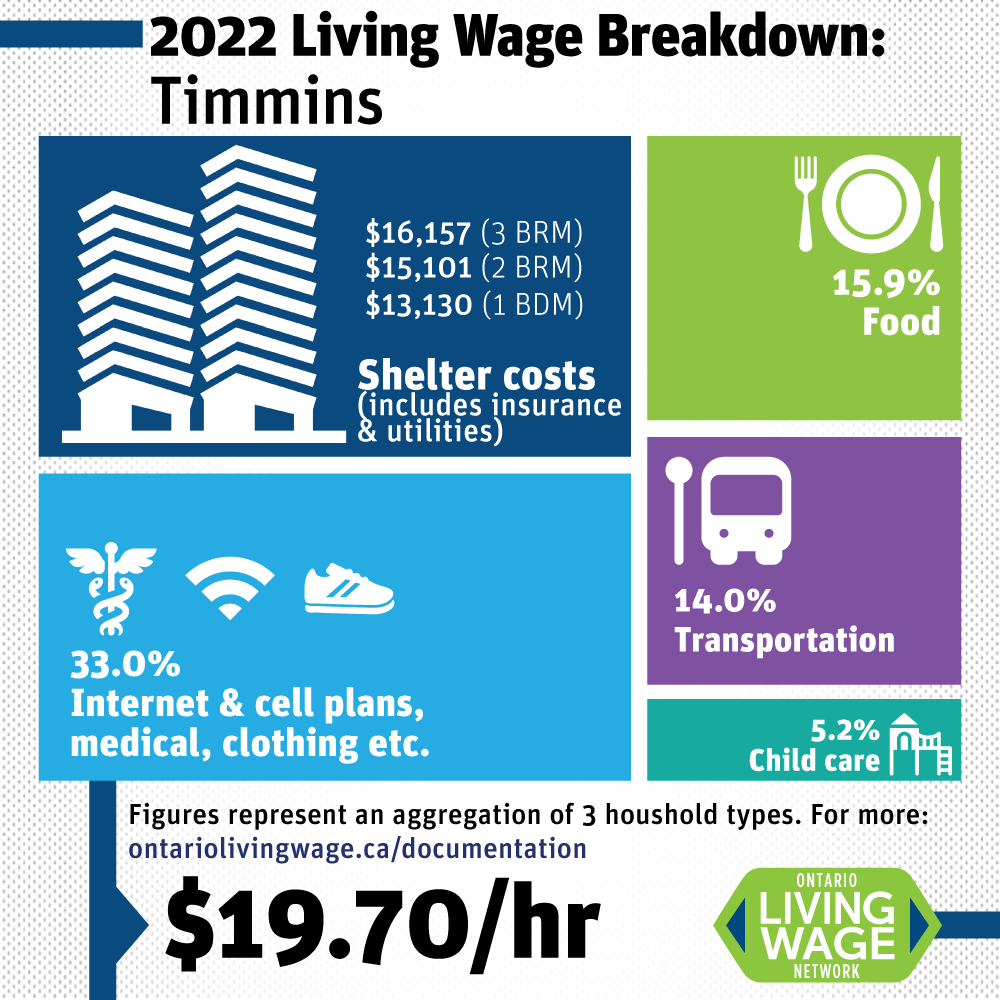
TIMMINS, ON – Every year, the Ontario Living Wage Network calculates the minimum hourly wage needed to cover basic expenses in cities across the province. The calculations reflect actual costs of food, shelter, clothing, and transportation — which have risen by unprecedented levels. Workers living in Timmins need to earn $19.70 per hour in order to make ends meet.
Timmins is one of 10 living wage regions that received calculations from the network this week. “This is the first year we have had a living wage calculated for our community,” said Noella Rinaldo, Director of Community Economic Development at the Timmins Economic Development Corporation. “With this figure, we can begin to understand what our workers need to get by and participate in the community,” Rinaldo added.
The living wage is not the same as the minimum wage, which is the legislated minimum determined by the province. The living wage reflects what people need to cover the actual costs of living in their community. “The current minimum wage of $15.50 per hour does not reflect the cost of living,” said Trisha Turner, Executive Director for the Cochrane District Social Planning Council. “Minimum wage, as it stands, doesn’t allow people a route out of poverty,” Turner added.
“This year’s living wage calculations emerge from a backdrop of record–breaking inflation and Consumer Price Index increases, and workers at the bottom end of the wage scale are most vulnerable to these kinds of fluctuations,” according to Anne Coleman, campaign manager for Ontario Living Wage Network. “A living wage is an effective tool to combat working poverty by making sure that employees can make ends meet where they live. By incorporating expenses that a worker must cover, our living wages are much closer to reality than a politically set minimum wage,” Coleman a
Many businesses and non-profits in a number of communities across Ontario have implemented living wage policies. However, there are many thousands of employees across Ontario working within public-sector institutions as either direct employees or as contracted staff earning less than a living wage.
With this calculation, local employers can choose to pay a living wage and become a certified living wage employer. Living wage employers sign a licence agreement and pay an annual employer certification fee. The fee helps the Ontario Living Wage Network calculate the living wage, certify and recognize employers for their living wage commitment, and advance the living wage movement.
Visit ontariolivingwage.ca to learn more about how the figure is calculated and to certify.
-30-
For more information, contact Noella Rinaldo at Noella.Rinaldo@timmins.ca or (705)360-2600 x 7081.
About the TEDC
The TEDC is the city’s non-profit community economic development team. We facilitate and support economic and social activity that creates jobs, diversifies the economy and improves quality of life.



